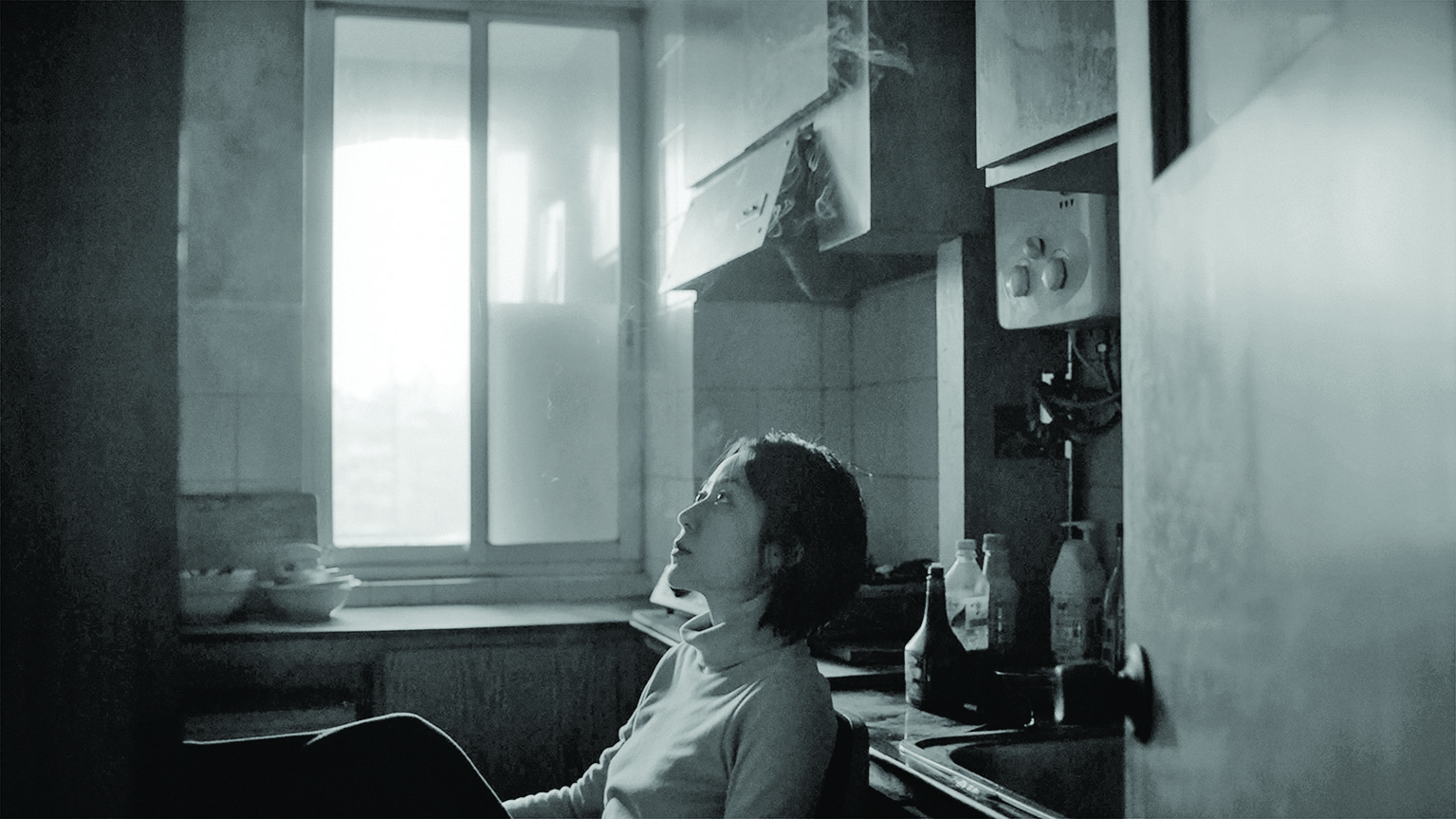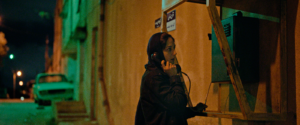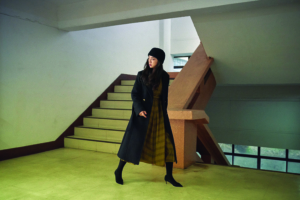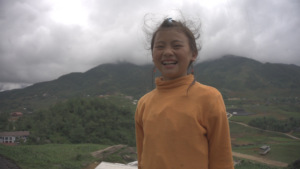Zheng Lu Xinyuan’s debut feature The Cloud in Her Room (2020) is bookended by two scenes of urban flux. In the first, an unidentified woman (Huang Lili) recounts a memory of ‘an old apartment in my home town that was deserted when I was a child’. Filming in tight close-up, the camera traces the details of the woman’s face as she recalls entering the flat one day and encountering another interloper busily cleaning the space. She explains that they ‘didn’t talk much, but both of us felt really happy’ – an unexpected moment of connection interrupted by someone barging into the apartment. In a fit of panic, the woman abandoned her new companion and started running: ‘I ran, ran and ran. When I turned back and looked, I couldn’t see the old apartment anymore. So I just kept on running until I was finally out of the place.’ Referred to as ‘Old Apartment Girl’ in the credits, this woman’s identity or her place in the constellation of characters who drift in and out of Zheng Lu’s film are never revealed. She does, however, reappear on the periphery of a later scene, her presence serving as a haunting reminder of the film’s preoccupation with space and its disappearance. On the other hand, the final image is a long shot that films a building being broken into fragments by an excavator. This image not only captures the tension between development and ruination that impacts the architectural fabric of modern cities, but also gestures towards the ephemeral nature of place described in the film’s opening memory.
Set in China, in Zheng Lu’s home city of Hangzhou, The Cloud in Her Room was conceived in 2014 while she was studying for her Master of Fine Arts in film production in Los Angeles.[1]See ‘The Cloud in Her Room Q&A | SGIFF 2020’, YouTube, 5 December 2020, <https://www.youtube.com/watch?v=8GkX9fP1MQs>, accessed 2 May 2021. Filmed in black-and-white over forty days with a predominantly non-professional cast, the film is composed of a series of loosely connected vignettes that centre on 22-year-old Muzi (Jin Jing), who has returned to Hangzhou for the Lunar New Year holiday. Muzi’s uneasy homecoming sees her attempt to not only relocate herself in the space of her youth, but also renegotiate her familial ties with her parents, who now lead separate lives; navigate the uncertain future of her relationship with her photographer boyfriend, Fei (Chen Zhou), who has followed her from Beijing; and pursue a burgeoning friendship with an older man (Dong Kangning) who owns a bar.
In its blending of reality, memory and dream in Muzi’s everyday interactions, The Cloud in Her Room creates a cinematic experience of transience.
Rather than being driven by a conventional narrative trajectory that clearly delineates a beginning, middle and end, the film traces an emotional geography that Zheng Lu has described as a ‘visual diary’.[2]Zheng Lu Xinyuan, in ‘Tiger Portrait #9 – Zheng Lu Xinyuan | IFFR 2020’, YouTube, 29 January 2020, <https://www.youtube.com/watch?v=0NsvX57DVn8>, accessed 2 May 2021. Despite this reference to diary writing, and although Zheng Lu has commented in interviews that the film integrates ‘certain things from [her] memory and from [her] past’, she has been quick to refute the suggestion that the film is purely autobiographical.[3]Zheng Lu Xinyuan, in ‘The Cloud in Her Room Q&A | SGIFF 2020’, op. cit. Instead, her rather enigmatic response to the film’s structure is that ‘everything can be a dream and everything can be a reality’.[4]ibid. In its blending of reality, memory and dream in Muzi’s everyday interactions, The Cloud in Her Room creates a cinematic experience of transience – one that evidently resonated with the jury at the 2020 International Film Festival Rotterdam, who bestowed the Tiger Award on Zheng Lu’s film.
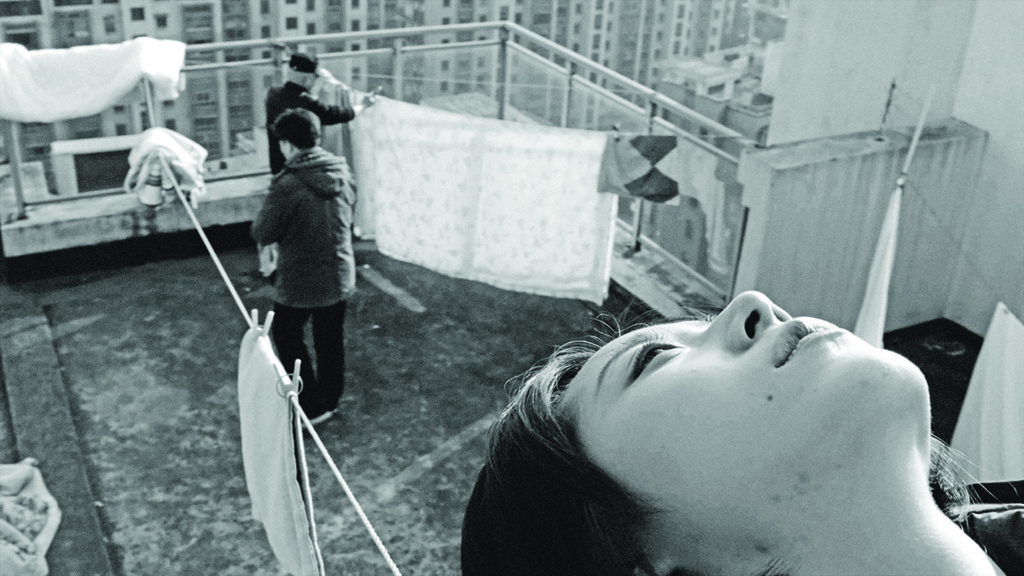
Urban intimacy
Towards the end of the film, Muzi and Fei stand on the side of a road discussing what to eat while trying to hail a taxi. As Fei turns from the road and looks out on the Qiantang River, he says, ‘Look, it’s beautiful over there. This is your city.’ As the camera cuts to the blurry nocturnal panorama that inspired Fei’s comment, Muzi replies, ‘But every time I come back, it feels more different than before.’ When the camera cuts back to where Muzi and Fei were originally standing, the scene remains unchanged, except for their notable absence – as though the viewer has just witnessed a memory inscribed in the contours of the city, rather than a moment unfolding in the film’s present. In this scene, the unclear distinction between Muzi’s everyday reality and memories not only underlines Zheng Lu’s statement that reality and dreams coexist in the film, but also emphasises the role of the city in containing traces of personal experience.
The presence of an urban consciousness in mainland Chinese cinema became increasingly prevalent in the mid 1990s with a collective of filmmakers named the ‘Urban Generation’. Directors such as Jia Zhang-Ke, Ning Ying and Wang Xiaoshuai emerged in the wake of widespread government-led gentrification and property redevelopment in China and set about using the film apparatus to, in the words of Chinese cinema scholar Zhang Zhen, ‘record and interpret [their] relationship to the ordinary people around them […] who inhabit or come to inhabit the ever-expanding social and material space of the cities’.[5]Zhang Zhen, ‘Introduction’, in Zhang (ed.), The Urban Generation: Chinese Cinema and Society at the Turn of the Twenty-first Century, Duke University Press, Durham, NC & London, 2007, p. 18. Not being content to document the changing face of the city, many in the Urban Generation collective were actively engaged in a defiant act of urban preservation. As researcher Yomi Braester writes, ‘The movies made since the mid-1990s are tinged with a fear for the future of memory, an anxiety for the loss of identity, and an urge to preserve images of the city.’[6]Yomi Braester, Painting the City Red: Chinese Cinema and the Urban Contract, Duke University Press, Durham, NC & London, 2010, p. 225. As a distant successor to this film movement, Zheng Lu is arguably less concerned with cinematically archiving the spaces of Hangzhou than interrogating the impact of the city on her characters. In this sense, the anxiety of place and identity so deeply felt in the films of the 1990s is displaced in The Cloud in Her Room by the fracturing of Muzi’s map of home and belonging.
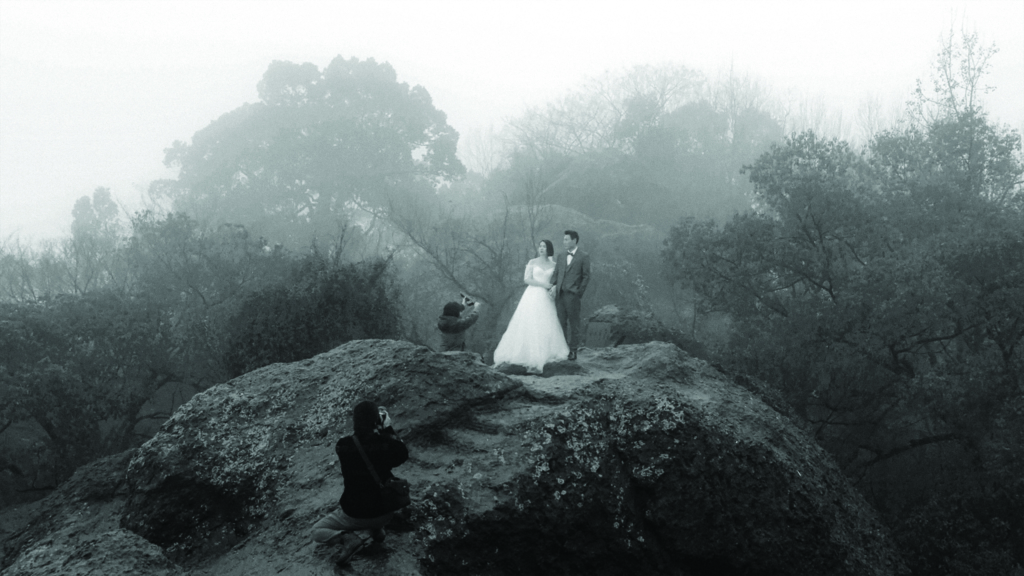
The first stop on Muzi’s map of Hangzhou is the apartment in which she grew up with her parents. Exploring the nooks and crannies of her childhood home, she opens a window in the kitchen, which immediately detaches from the frame and crashes to the ground below. The broken window not only emphasises the sad abandonment of the apartment and the dissolution of her family, but also functions as a counterpoint to the urban development that is the backdrop to the film. Reflecting on the film’s location, Zheng Lu commented that Hangzhou is ‘really famous for its scenery […] but I tried to not romanticise the city because it’s my home town or because it’s in a film’.[7]Zheng Lu Xinyuan, in ‘The Cloud in Her Room Q&A with Zheng Lu Xinyuan’, YouTube, 31 December 2020, <https://www.youtube.com/watch?v=WVKJLfa8_2Q>, accessed 5 May 2021. Far from romanticising Hangzhou’s famous mountain vistas and ancient pagodas, the film represents the city most strongly through sound. Indeed, one of the most striking elements of The Cloud in Her Room is the eschewal of non-diegetic music. Aside from a scene in a nightclub and the closing credits, both of which are accompanied by the experimental soundscapes of Taiwanese composer Tseng Yun-Fang, Zheng Lu employs the discord of construction work to fill the silences in the film’s scenes.
Just as the limits between reality, memory and dream are indistinct in the film, the boundary between public and private – city space and domestic space – is rendered porous. This is beautifully realised in the scene that follows Muzi and Fei’s lovemaking, when the intimacy of their naked bodies lying entwined is intruded on by the industrial soundscape of traffic and the distant echo of a pile driver, which almost obscures Muzi’s heavy post-coital breathing. As the film progresses and Muzi continually travels between the now-deserted family apartment, her parents’ separate homes and the bars, noodle shops and rustic alleyways of Hangzhou, the cyclical rhythm of her movements is soundtracked by the ever-present sounds of urban development. The repetition of the film’s aural textures not only lends a sense of geographical verisimilitude, but also underscores that, despite Muzi’s constant journeying within and through the spaces of Hangzhou, she is bound by memory.
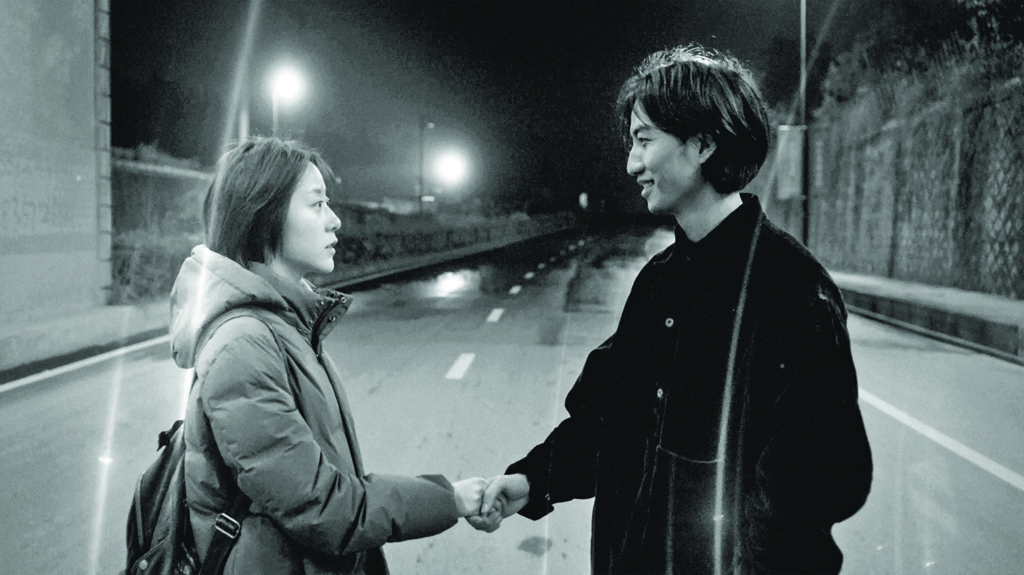
The architecture of memory
In a direct nod to Hangzhou’s renewed architectural infrastructure in preparation for its hosting duties for the Asian Games in 2022, The Cloud in Her Room depicts buildings being torn down and constructed around Muzi. However, her character’s trajectory is best encapsulated in a scene in which she sits on the bar owner’s lap while driving around in circles in a vacant car park. Muzi’s attraction to the bar owner is not revealed until close to the end of the film, when she tells him, ‘You really remind me of someone […] But then, I found out you are not him.’ The identity of the absent person is never disclosed in the film, but is arguably the subject of one of Muzi’s voiceover monologues, in which she confides, ‘You just disappeared, like you’ve never existed before.’ While the passage of time is marked architecturally in the public spaces of the city, the characters’ awareness of temporality is infused with loss, such as when one of Muzi’s acquaintances tells her of his first love, but finally concedes, ‘As time goes by … after you have a family and a kid, you can’t think about these things anymore.’
The architecture of Zheng Lu’s film emerges from the fragments of the characters’ memories, unearthed from the debris and rubble of the city and stitched together to reconstitute an urban narrative.
The complex and almost indistinguishable intermingling of reality and memory in The Cloud in Her Room is further complicated by the film’s cinematography, which switches from the crisp monotones of Matthias Delvaux’s camerawork to grainy and soft-focused iPhone imagery of Muzi casually recording her interactions with the other characters, as well as to negative images that imbue the frame with an alien sensibility. Significantly, the change in visual register does not assist in determining which scenes are real and which are imagined. For example, the scenes captured in negative include shots of both construction work and a dreamy kiss between Muzi and her mother (Liu Dan) that conceivably transgresses the boundaries of a conventional mother–daughter relationship. For her part, Zheng Lu has guarded against a singular interpretation of the film’s mix of reality and memory, commenting, ‘I don’t want to create certain visual cues for people to differentiate what is what.’[8]Zheng Lu Xinyuan, in ‘The Cloud in Her Room Q&A with Director Zheng Lu Xinyuan & Vanessa Gildea’, YouTube, 24 March 2021, <https://www.youtube.com/watch?v=6iyXxlpCQRA>, accessed 9 May 2021.
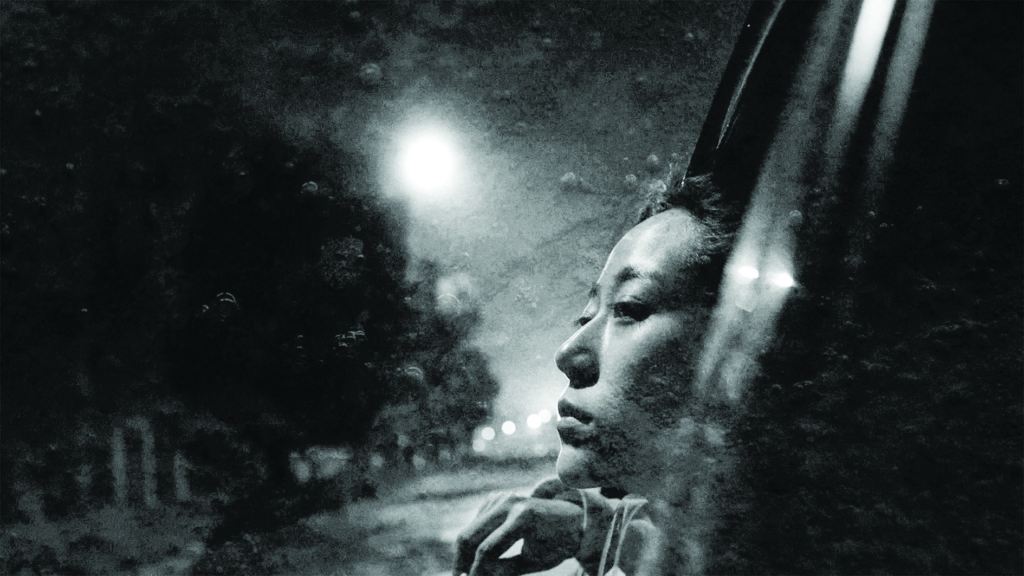
The inconsequentiality of the film’s vignettes also emphasises Zheng Lu’s eschewal of linear chronology in favour of a mood that articulates the unsettling impermanence engendered by rapidly modernising cities – places that, in refusing to remain static, erase the physical signposts of their inhabitants’ personal histories. Zheng Lu, who worked on the editing individually before being joined by Liu Xinzhu, utilises the metaphor of fragmentation depicted in the film’s final demolition scene as a structuring device. Through this approach, the architecture of her film emerges from the fragments of the characters’ memories, unearthed from the debris and rubble of the city and stitched together to reconstitute an urban narrative. Interstitial moments such as Muzi’s mother and her new foreign boyfriend (played by cinematographer Delvaux) trying to teach each other how to speak in their respective languages and Muzi and Fei smoking cigarettes and taking photos on a vacant rooftop are just some of the broken shards that Zheng Lu pieces together alongside shots of Hangzhou.
In juxtaposing scenes of the city with micro landscapes of extreme intimacy, Zheng Lu emphasises how the conception of a place is built on the memories and encounters that take place within it. Moreover, the discontinuity of the modern cityscape is reinforced in even the most private of settings, such as a scene featuring Muzi lying in a bathtub that transitions from a close-up of her vulva to an ultra-close-up of her pubic hair. As the camera films the sensuous movement of the coarse strands of her pubic hair in the water, Muzi’s body becomes another landscape that inevitably disappears as she lowers herself deep into the bathwater. The scene functions as an oddly poetic reminder of the film’s underlying concern with disappearance that extends from the changing environment of the city to the characters’ personal relationships. Indeed, the cloud to which the film’s title alludes is not something tangible or visible in one of the many rooms through which the film travels, but, rather, is a feeling or sentiment of evanescence that pervades every scene. Much like the wafts of cigarette smoke and the vapours from the rice cooker that Muzi’s mother uses to steam her face, The Cloud in Her Room speaks to the melancholic awareness that nothing remains the same.
Endnotes
| 1 | See ‘The Cloud in Her Room Q&A | SGIFF 2020’, YouTube, 5 December 2020, <https://www.youtube.com/watch?v=8GkX9fP1MQs>, accessed 2 May 2021. |
|---|---|
| 2 | Zheng Lu Xinyuan, in ‘Tiger Portrait #9 – Zheng Lu Xinyuan | IFFR 2020’, YouTube, 29 January 2020, <https://www.youtube.com/watch?v=0NsvX57DVn8>, accessed 2 May 2021. |
| 3 | Zheng Lu Xinyuan, in ‘The Cloud in Her Room Q&A | SGIFF 2020’, op. cit. |
| 4 | ibid. |
| 5 | Zhang Zhen, ‘Introduction’, in Zhang (ed.), The Urban Generation: Chinese Cinema and Society at the Turn of the Twenty-first Century, Duke University Press, Durham, NC & London, 2007, p. 18. |
| 6 | Yomi Braester, Painting the City Red: Chinese Cinema and the Urban Contract, Duke University Press, Durham, NC & London, 2010, p. 225. |
| 7 | Zheng Lu Xinyuan, in ‘The Cloud in Her Room Q&A with Zheng Lu Xinyuan’, YouTube, 31 December 2020, <https://www.youtube.com/watch?v=WVKJLfa8_2Q>, accessed 5 May 2021. |
| 8 | Zheng Lu Xinyuan, in ‘The Cloud in Her Room Q&A with Director Zheng Lu Xinyuan & Vanessa Gildea’, YouTube, 24 March 2021, <https://www.youtube.com/watch?v=6iyXxlpCQRA>, accessed 9 May 2021. |
